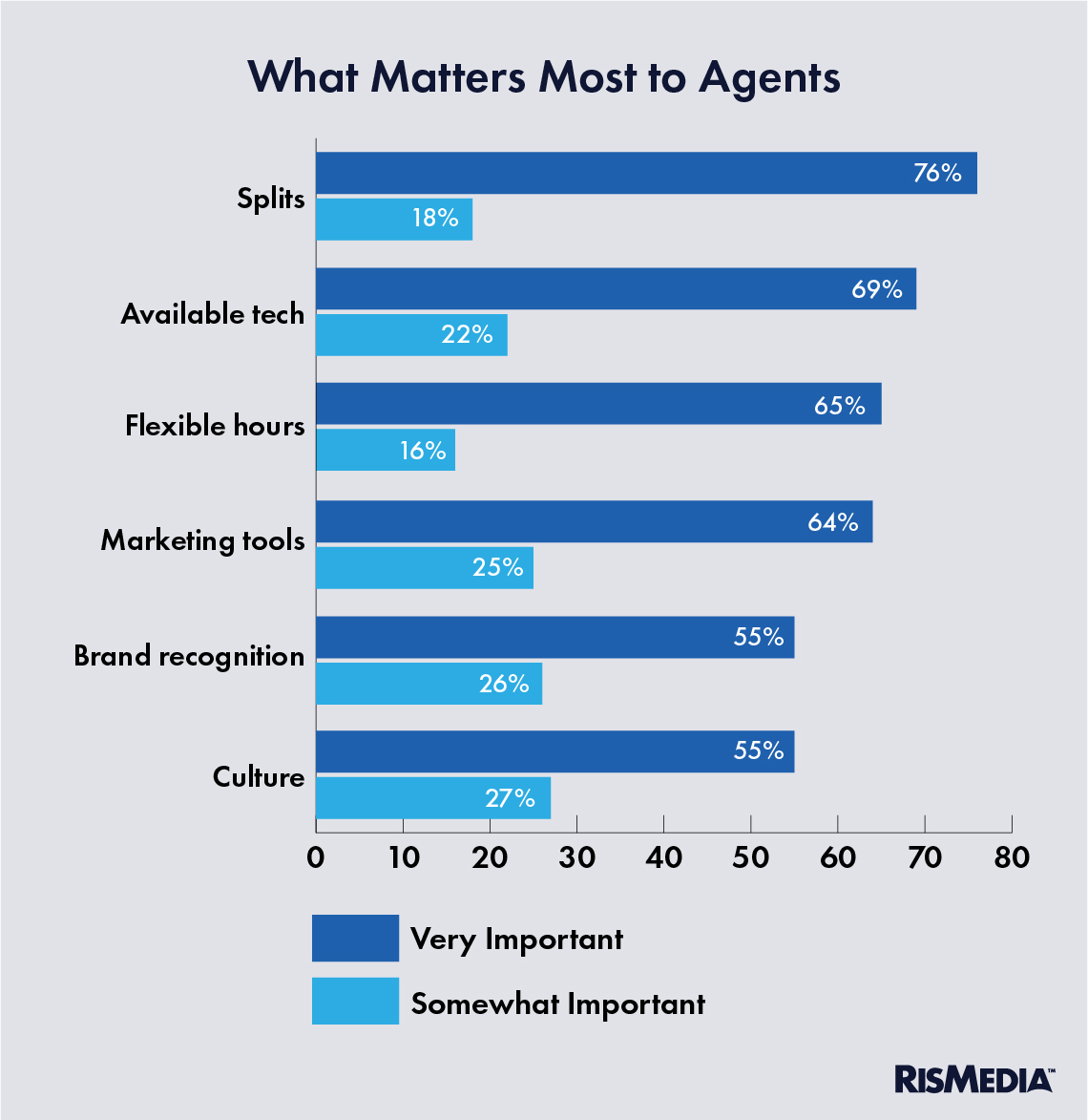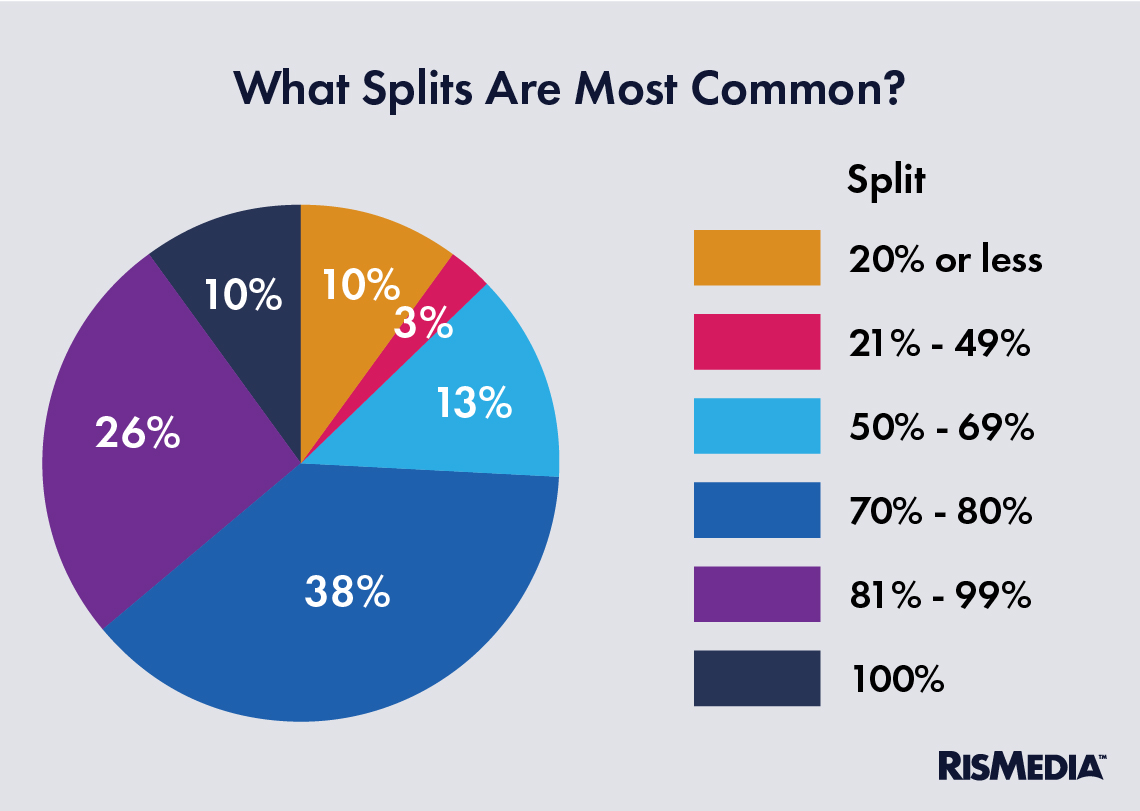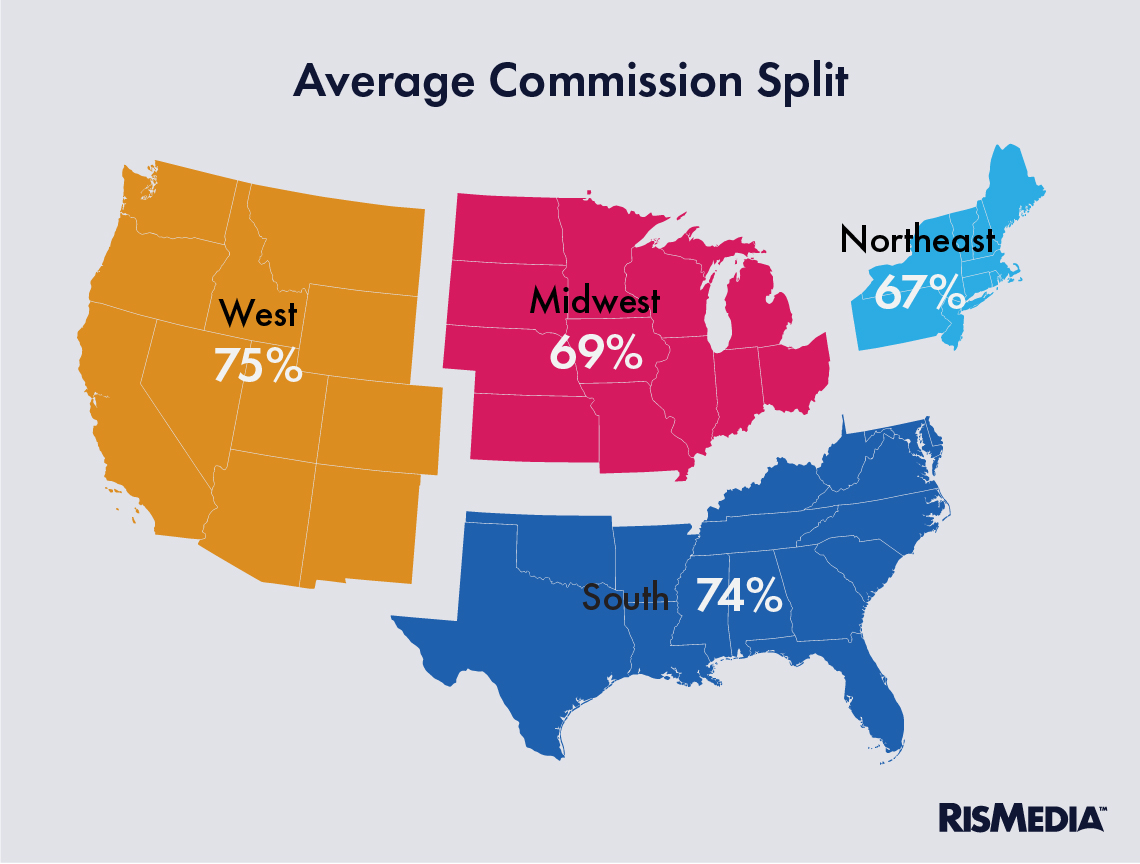Fundamentally—and unsurprisingly—commission splits are one of the most important factors in a real estate agent’s earnings. How much of a commission you get to take home, and how much goes to your broker or team leader is clearly foundational to what your overall compensation will look like. Nearly all (94%) agents and commission-earning brokers in the study named it as important to their career, while 76% rated splits as “very important.”

What are agents and brokers actually getting, though? Maybe the most important revelation from this year’s study is that agents are taking home less of the commission they earn. Last year’s report found that agents and commission-earning brokers took home an average of 77%, as many companies continued to ride the pandemic boom market. This year, the average was 70%.
This significant drop was distributed evenly across regions and demographics, meaning the shift was almost certainly a result of the broad real estate market correction as opposed to some specific change in policy as far as how agents are compensated.
The study found that more than a third (38%) worked under a model that let them keep between 70% and 80% of their commission, roughly consistent with last year. This was also somewhat consistent across regions and demographics—the 70/30 or 80/20 model seems to be standard. But plenty of factors contributed to an agent or broker taking home more or less.

Unsurprisingly again, experience makes the biggest difference in determining a split. Those with less than three years of experience in real estate averaged 63%, while those with 10 or more years under their belt took home 75%. That is a slight decrease for rookies from last year, when RISMedia found that those with under three years of experience made 66%. Interestingly, age was just as strong a predictor of split this year, with agents and brokers aged 18 to 34 making an average of 60% of their commission compared to 70% for those aged 35 to 54.
But there is only one way to gain more experience (or to get older). Being told to wait, though, is hardly useful advice for an ambitious agent or broker who wants to increase their earnings. How do other, more pragmatic choices affect your split?
One very interesting and pertinent revelation unveiled by the study is the effect of being in office. Surprisingly, splits were very different between those who say they “never” go to an office and those who say they spend at least some time there.
Fully remote agents and brokers keep an average of 80% of their commission, while those who go into the office take home 70%. This gap widened significantly from last year, when the difference between those working in the office and those working at home was only 4%.

Whether this is a correlative effect of the data (perhaps very experienced agents are more likely to work fully from home) or an endorsement of the all-remote model is unclear. But on the surface, a remote model appears to be better for your bottom line. The “never” in office agent and broker was much more likely to earn a high split, with a staggering 35% keeping 91% or more of their commission, and more than a fifth (21%) keeping all of it. While it is difficult to parse out all the variables that contribute to this, companies that employ remote agents and brokers may be offering bigger splits as they save money by cutting physical office space (or other services).
Another surprise was how little the brokerage type affects splits. There was essentially no difference between national franchises, independents or alternative models—all averaged about 70% across all demographics and experience. Looking deeper though, there are some differences in how these different models split commissions.
National franchises were slightly more likely to do better than the 50/50 split, with less than a quarter (23%) earning 50% commission or less. For those working at independents, 31% took home half or less of their commission, and for hybrid or other models, 28% took these lower rates.

For those looking to max out and take home all their commission, national franchises were the least likely to offer that—only 8% of brokers and agents didn’t have to split commissions. For hybrid, self-employed or alternative models, that number was 13%, and 10% of those at independents kept all their commission.
This year, the report also encompassed teams—a relatively new but growing trend in real estate. Only 22% of brokers and agents said they were part of a team, and reported paying an average of 34% commission to their team leader. Younger agents, and those working in the Northeast and West were most likely to pay more (agents aged 18 to 34 paid 40%), while those working in the Midwest, older agents and those who worked remotely paid less (Midwest and remote agents paid 29% to team leads).
As far as geography, the West—where homes are more expensive but also in short supply right now—offered the highest average commission split, with agents and brokers taking home 75%. The Northeast was the lowest at 67%, with the Midwest offering 69% and the South 74%. The Midwest and West also had a higher proportion of agents and brokers taking home 50% or less of their commission (both at 32%) compared to the other two regions (both at 24%).




